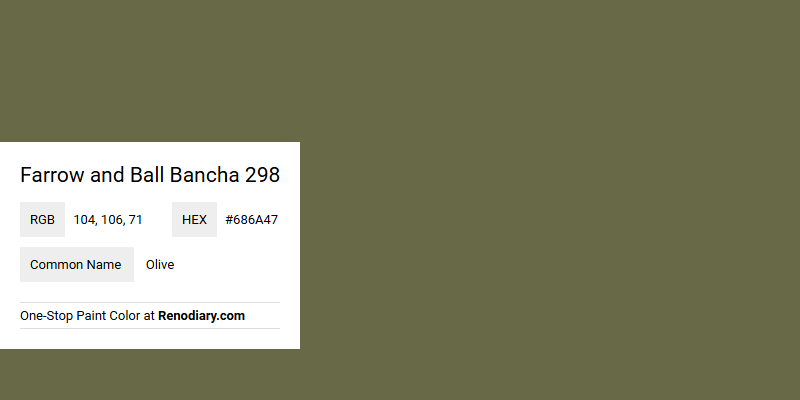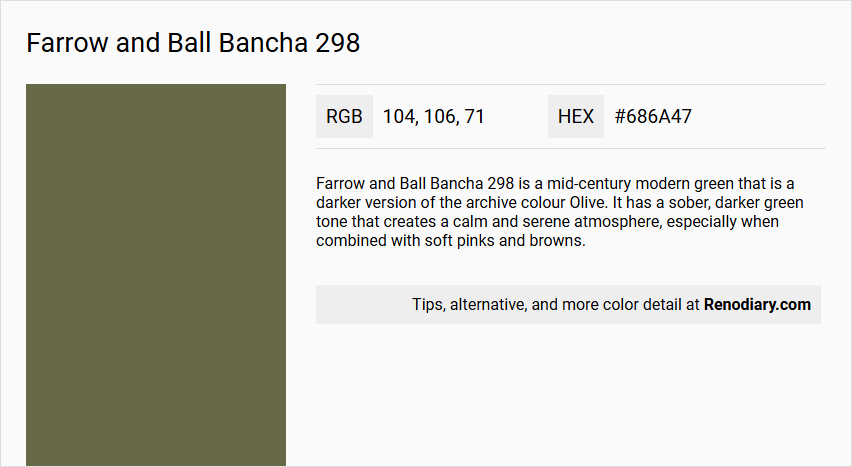
Farrow and Ball's Bancha 298 is a sophisticated shade that embodies the calming greenery of olive hues, represented precisely by its RGB values of 104, 106, 71. This rich, earth-toned color evokes a serene and natural ambiance, making it ideal for creating tranquil living spaces that feel both grounded and luxurious. Using Bancha in interior design can effortlessly introduce an organic warmth, harmonizing with both bold and neutral color palettes.
Farrow and Ball Bancha 298
Color Description
Farrow and Ball Bancha 298 is a mid-century modern green that is a darker version of the archive colour Olive. It has a sober, darker green tone that creates a calm and serene atmosphere, especially when combined with soft pinks and browns.
Undertones
The undertone of Bancha 298 can be accurately described as having a yellow hue.
Color Values
- HEX value: #686A47
- RGB code: 104, 106, 71
Usage
Bancha 298 is suitable for various rooms, including bedrooms, living rooms, and bathrooms. It is recommended to use it with Farrow & Ball Undercoat in Dark Tones. The paint is part of the Estate Emulsion range, which is a high-quality, ultra-matt chalk paint for interior ceilings and walls (ultra-matt: 2% sheen).
Atmosphere
The color creates rooms that feel calm and serene, providing a sense of security, much like the feeling associated with a cup of green tea. It is named after Japanese tea leaves, which adds to its soothing and secure ambiance.
Farrow and Ball Bancha 298 Color Alternative
Farrow and Ball Bancha 298 has striking alternatives that captivate distinct yet complementary green nuances. Sherwin Williams Oakmoss SW 6180 delivers a deep, robust tone while Benjamin Moore Turtle Green 2142-20 brightens the ambiance with its vivid accent, and Behr Portsmouth Olive HDC-CL-20 presents a unique blend of earthy sophistication. These color alternatives provide versatile options for designers who wish to explore varied expressions of green without compromising the character that Bancha 298 embodies.
Bathroom
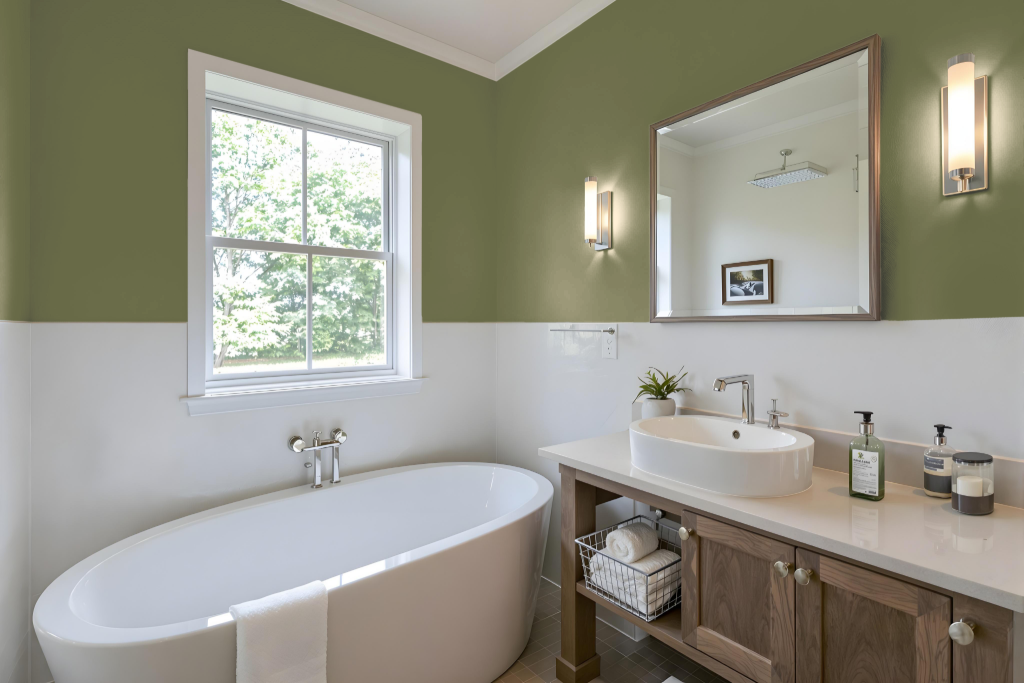
For a bathroom, Farrow and Ball's Bancha 298 is not the ideal choice when considering the appropriate finish for high-moisture environments. The recommended option for walls and ceilings in such settings is a water-based finish with a 7% sheen level, engineered to be fully wipeable and washable for effective maintenance and durability.
This finish provides essential protection against moisture, condensation, and mold, ensuring longevity in demanding conditions. Its formulation offers superior resistance compared to alternatives that are less suited to the challenges presented by bathrooms.
Bedroom
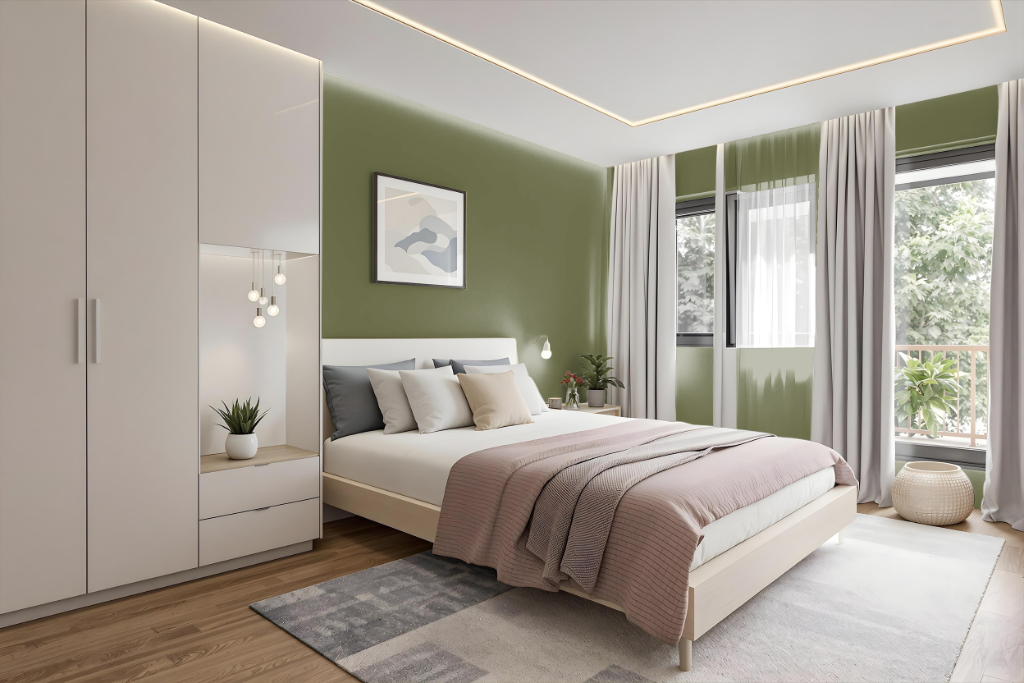
For a bedroom color scheme, Farrow and Ball Bancha 298 sets a calm and serene tone, establishing a grounding ambiance ideal for relaxation. This soothing shade, when used thoughtfully, can create an atmosphere of security and tranquility that enhances the overall bedroom experience.
When paired with soft pinks and browns, Bancha 298 deepens the sense of warmth and comfort. Additionally, incorporating complementary hues like a gentle off-white, a subtle blue, a lightest taupe, a muted stone, or a natural drab can add depth and dynamic interest. For a refined look, consider using Bancha 298 as an accent on walls, ceilings, or interior doors to introduce the calming shade without overwhelming the space.
Kitchen
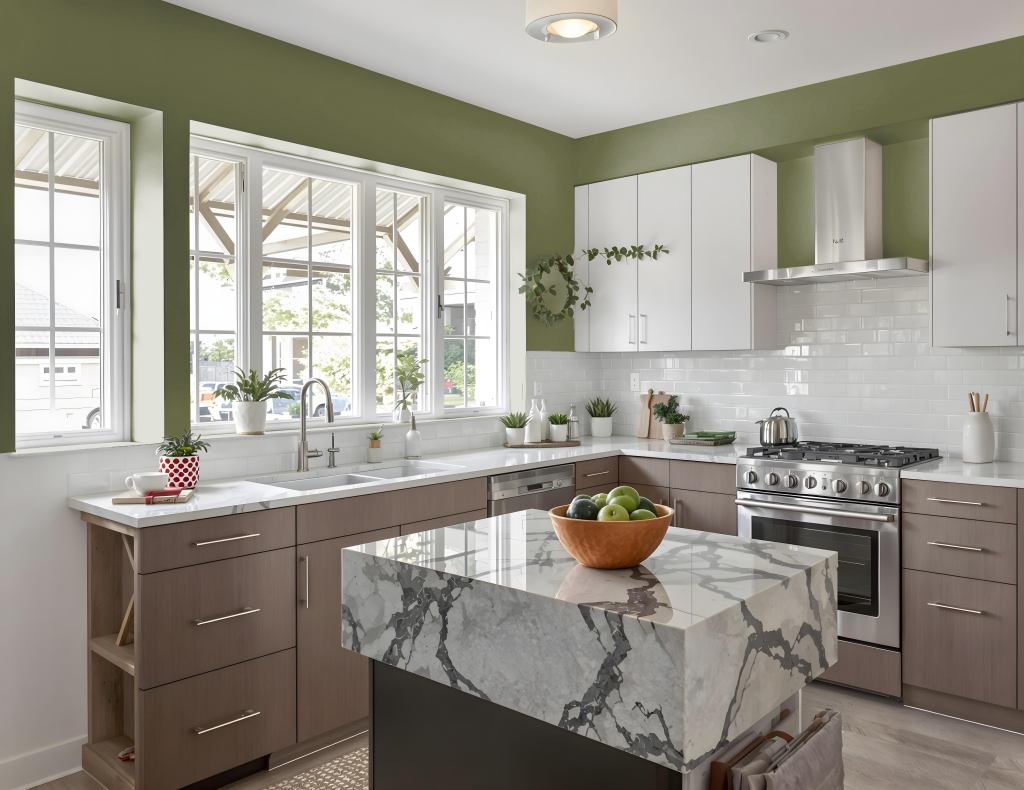
For a kitchen color scheme, Farrow and Ball's Bancha 298 provides a deep, green tone that can elevate the design of the space. It works well on accent walls, ceilings, or interior and exterior doors, and pairs harmoniously with complementary shades such as Hay No. 37, James White No. 2010, or Setting Plaster No. 231 to create a balanced look.
Featuring a Modern Emulsion finish that is exceptionally durable, washable, and mold-resistant, this option is ideal for high-use areas like kitchens and bathrooms. Incorporating additional accents in soft pinks, browns, or neutral tones such as soft cream or tan enhances the calm and serene atmosphere of the area.
Living Room
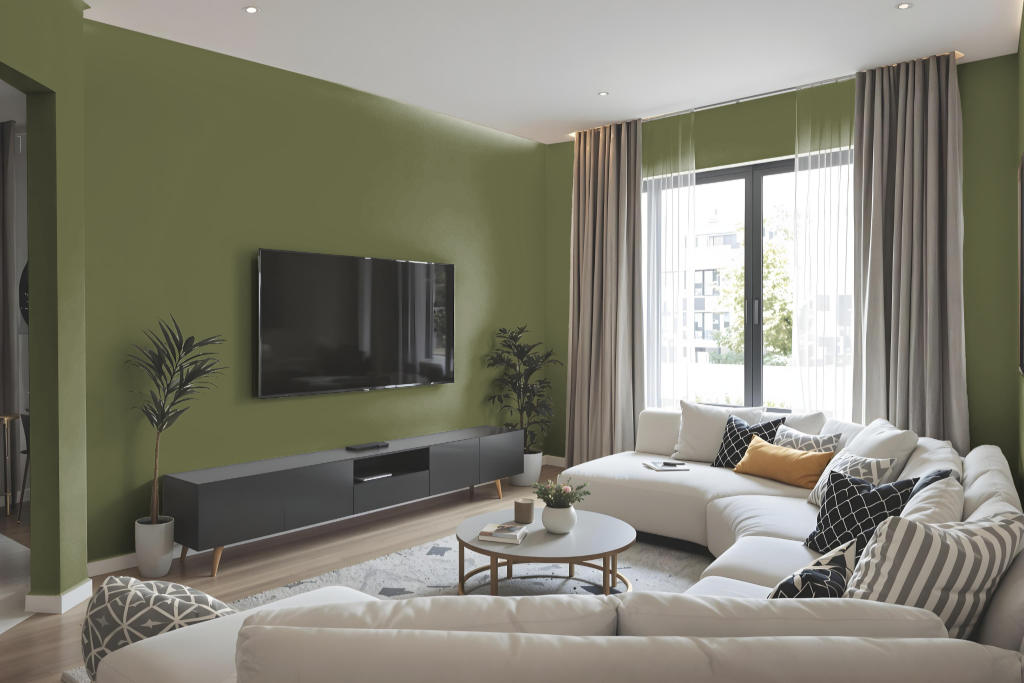
Farrow and Ball Bancha 298 offers a calming living room color that creates a serene atmosphere. Its soft tone pairs beautifully with gentle pinks and browns, as well as with cream, tan, French gray, or bright white, fostering a peaceful environment enhanced by carefully chosen complementary shades recommended by the experts.
Bancha works well across various surfaces including walls, ceilings, and both interior and exterior doors, allowing homeowners to introduce the color gradually. The suggested pairings contribute to a harmonious space, ensuring a distinctive yet unified look.
Outdoor
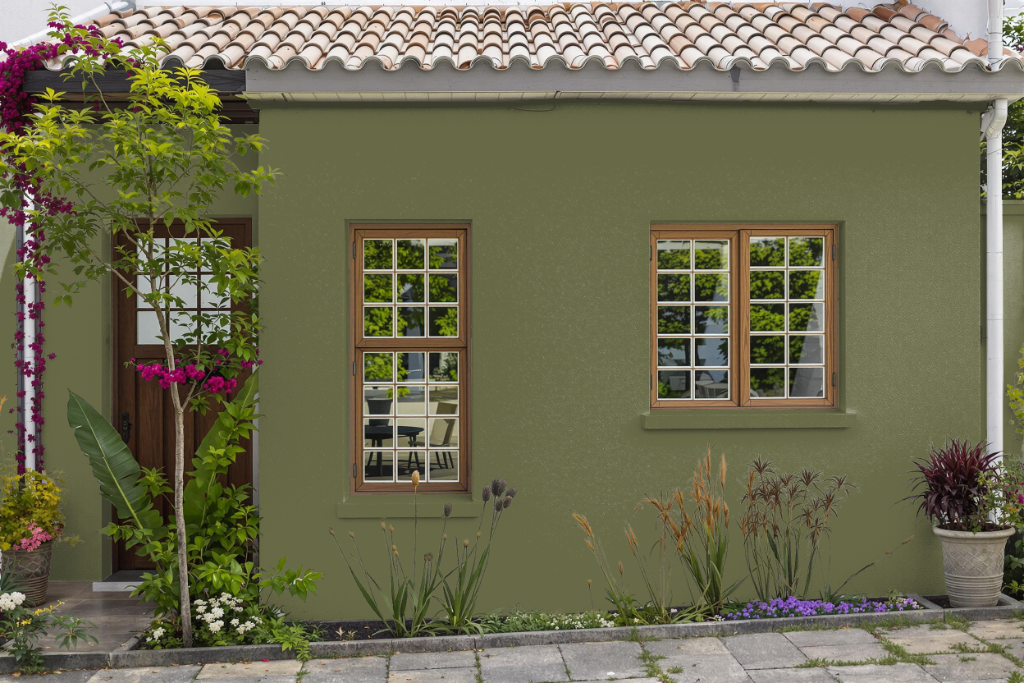
For home exteriors, Farrow & Ball's Bancha No. 298 offers an appealing aesthetic, yet it is crafted exclusively for interiors. When seeking a similar tone for outdoor applications, it is best to turn to Farrow & Ball's exterior paint ranges.
For masonry materials like brick, render, and concrete, there is an option formulated to protect against moisture, fungi, and algae—all while promising durability for up to 15 years. Similarly, for wood and metal cladding, an alternative finish is available that delivers reliable weather resistance and protection for a period of up to six years.
